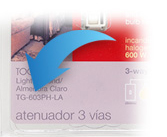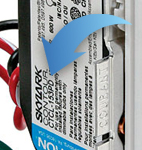
Explore Knowledge Articles
Maestro PRO Troubleshooting Guide
Maestro PRO Troubleshooting Guide
This article provides troubleshooting steps for a Lutron Maestro PRO Dimmer (MA-PRO).
This article is expected to take 5 minutes to complete.
Knowledge Article Contents:
Before You Begin
LED Lights Flicker or Buzz When Dimmed
Before You Begin
Confirm the Maestro PRO Dimmer is installed properly by reviewing the installation resources in the links below. Click on the link below for the application you are troubleshooting:
Single-pole install (for lights controlled from one switch)
Three-way install (for lights controlled from two switches)
Multi-location install (for lights controlled from three or more switches)
Note: For three-way and multi-location installations the remaining switches must be replaced with the Maestro Companion Dimmer (model # MA-R / MSC-AD). The MA-PRO can be installed in any location.
LED Lights Do Not Dim
If your LED lights do not dim, or they flash/strobe when dimming them, confirm the LED light that the dimmer is controlling is dimmable.
Not all LED lights are dimmable. Look for wording like “Not for use with a dimmer” or “non-dimmable” on your LED to determine if it is a non-dimmable light. LED dimmers require dimmable bulbs to function properly.
Refer to the Lutron LED Compatibility Tool for a list of dimmable LED bulbs.
LED Lights Flicker or Buzz When Dimmed
If your LED lights flicker, buzz, or hum when dimmed, an incompatibility between the dimmer and LED bulb may be causing the issue.
- Test the dimmer with an incandescent bulb or an LED from the Lutron LED Compatibility Tool. If the issue persists, contact Lutron Technical Support for assistance.
- If the flicker, buzzing, or humming stops when using a different bulb, we recommend replacing the existing LEDs with ones from the Finder Tool.
- If the lights the dimmer controls only flicker near the high or low end of the dimming range, adjust the dimmer’s high-end or low-end trim setting:
Low-End Trim Programming
The low-end trim adjustment increases or decreases the minimum light level of the dimmer. It helps to stop the lights from flickering when the dimmer is set to its lowest brightness. It also can prevent the lights from dropping out (turning off before the dimmer dims all the way down).
Follow the steps below to adjust your Maestro PRO Dimmer’s low-end trim:
- Press and hold
and
until a Dimmer Indicator Light (DIL) blinks, then release. The lights will turn off and back on to the low end.
- Press
or
to adjust the light level until the lights no longer flicker.
- Tap
to save this setting.
- Tap
again to turn the lights off.
- Press
once to turn the lights on to the low end.
If the lights do not turn on, or continue to flicker, repeat these steps until the lights turn on and remain stable.
Instructions on High-End, Phase Selection, and additional features can be found in the Maestro PRO Dimmer Advanced Programming Guide.
High-End Trim Programming
The high-end trim adjustment increases or decreases the maximum light level of the dimmer. It is also used to stop the following symptoms of LED incompatibility:
- Lights flicker when the dimmer is at full brightness.
- Lights experience a sudden pop-on when turning on.
- Significant delays when turning on your lights.
Phase Selection
Confirm that the dimmer is in the correct phase for the lighting load being used. The MA-PRO allows for selection of forward-, auto, or reverse- dimming phase. The Phase Selectable dimmer default powers up in reverse-phase. For low voltage applications the neutral connection is required on the dimmer and reverse-phase is used for ELV Electronic Low Voltage and forward-phase is used for MLV Magnetic Low Voltage applications.
Certain LED fixtures may perform better on forward or reverse-phase, consult the lighting manufacturer for more information on the preferred dimming protocol.
Indicator Lights are Blinking
The Maestro PRO dimmer is capable of displaying blink codes. Please visit "The Maestro Dimmer is Blinking" article for more information.


